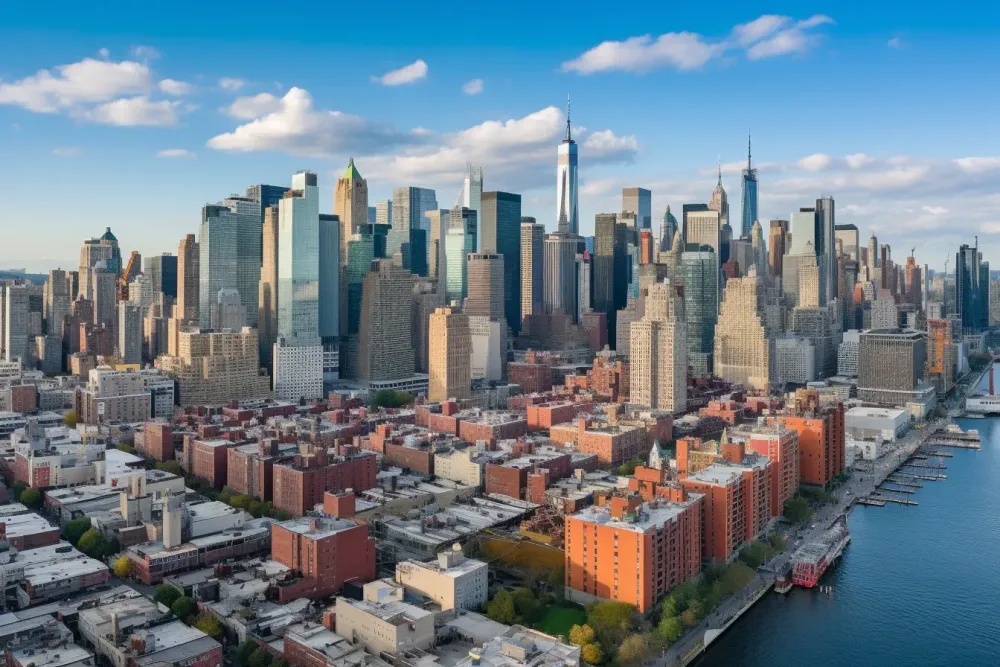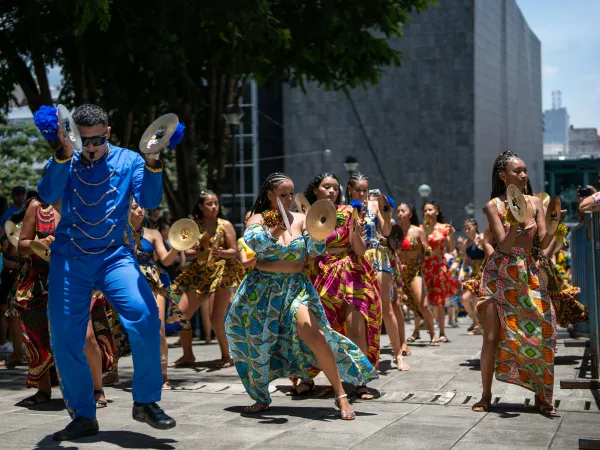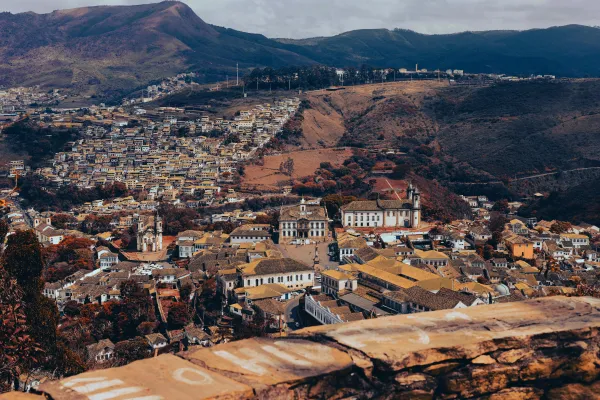21 Best Things To Do In Hell's Kitchen, The Real New York
Hell’s Kitchen might not be the first name that pops up when planning a trip to NYC, but that’s exactly why it’s such a gem. Just a few blocks west of Times Square — yet miles away in vibe — this neighborhood feels like the city’s best-kept secret. I still remember the first time I wandered down 9th Avenue on a crisp fall morning. The smells of coffee, the sound of someone practicing jazz sax out a window, and that perfect New York mix of grit and charm — it instantly felt real.
Historically rough around the edges, Hell’s Kitchen has mellowed into a more livable kind of cool. You’ll find everything from family-run restaurants to indie galleries, pocket parks, old Irish pubs, and unexpected moments of peace along the Hudson. Whether you're a first-timer in NYC or a seasoned local looking for something new, Hell’s Kitchen deserves a slow wander.
Here are some of the best things to do in this underrated slice of Manhattan.
1. Intrepid Sea, Air & Space Museum
📍Location: Pier 86, W 46th St & 12th Ave, New York, NY 10036
If you’ve ever wanted to walk across a real aircraft carrier, peek inside a Concorde jet, and stand nose-to-nose with a space shuttle — all in one day — the Intrepid Museum is your place. I was genuinely surprised the first time I visited. I thought it’d be a quick look around, but I ended up staying for hours.
Housed aboard the USS Intrepid, a World War II aircraft carrier that took a beating and kept going (literally survived kamikaze attacks), the museum tells the story of American innovation and resilience. You’ll also find the Space Shuttle Enterprise, a supersonic Concorde, and even a nuclear submarine docked nearby.
Fun fact:
The museum is housed on a real WWII aircraft carrier that survived five kamikaze attacks and a torpedo strike.
Important Information:
- Parking: Paid lots nearby; limited metered street parking
- Accessibility: Fully accessible, including elevators to all decks
- Fee: $36 adults / $26 children
- Hours: Daily, 10am–5pm
- Best time to visit: Weekdays before noon
- Insider tip: Don’t miss the Space Shuttle Pavilion — the Enterprise is massive in person.
2. Manhattan Kayak Co.
📍Location: Pier 84 at W 44th St & 12th Ave, New York, NY 10036
Kayaking? In Manhattan? Yep — and it’s one of the most unforgettable ways to see the city.
Whether you're a total beginner or have arms like Aquaman, Manhattan Kayak Co. makes paddling along the Hudson River easy and awe-inspiring. You’ll glide past Midtown’s skyline as the water laps gently under your boat, and suddenly the city feels... peaceful. It’s one of those “wait, am I really in New York right now?” moments.
You can book everything from 90-minute intro sessions to longer guided tours — even nighttime paddles lit by the city’s glow.
Fun fact:
You can kayak the Hudson River with views of Midtown’s skyline — no experience needed.
Important Information:
- Parking: Paid garages nearby
- Accessibility: Not wheelchair accessible
- Fee: $35–$99 depending on tour type
- Hours: Vary by season; mostly afternoon/evenings
- Best time to visit: Late spring through early fall
- Insider tip: Sunset paddles offer the most Instagram-worthy skyline views.
3. Irish Arts Center
📍Location: 726 11th Ave, New York, NY 10019
Tucked away from the bustle, the Irish Arts Center is a soulful little hub that’s as much about community as it is about culture. What started back in the '70s as a space to celebrate Irish heritage has become one of NYC’s most vibrant cultural venues.
I’ve caught everything here from storytelling nights that had me laughing out loud to hauntingly beautiful live music. They also offer classes — think Irish language, fiddle, or even step dancing (yes, like Riverdance). And no surprise: Liam Neeson helped fund its latest expansion.
Fun fact:
Liam Neeson helped raise funds for the center’s recent $60 million expansion.
Important Information:
- Parking: Limited street parking; nearby paid garages
- Accessibility: Fully ADA accessible
- Fee: Event pricing varies ($20–$50)
- Hours: Open during performances and gallery hours
- Best time to visit: For live Irish music or storytelling nights
- Insider tip: Take a class in Irish language or step dancing — they fill up fast.
4. Circle Line Sightseeing Cruises
📍Location: Pier 83, W 42nd St & 12th Ave, New York, NY 10036
Here’s a local truth: you haven’t really seen New York until you’ve seen it from the water. Circle Line Cruises have been taking folks around Manhattan for 75+ years, and they still do it right. It’s touristy, sure — but in the best way.
The 2.5-hour full-island cruise is like a living documentary. You’ll pass under the Brooklyn Bridge, get Statue of Liberty views, and cruise past hidden corners of the city that most locals forget exist. I always recommend it to out-of-towners — and secretly love going myself, especially at golden hour when the skyline turns gold and glass.
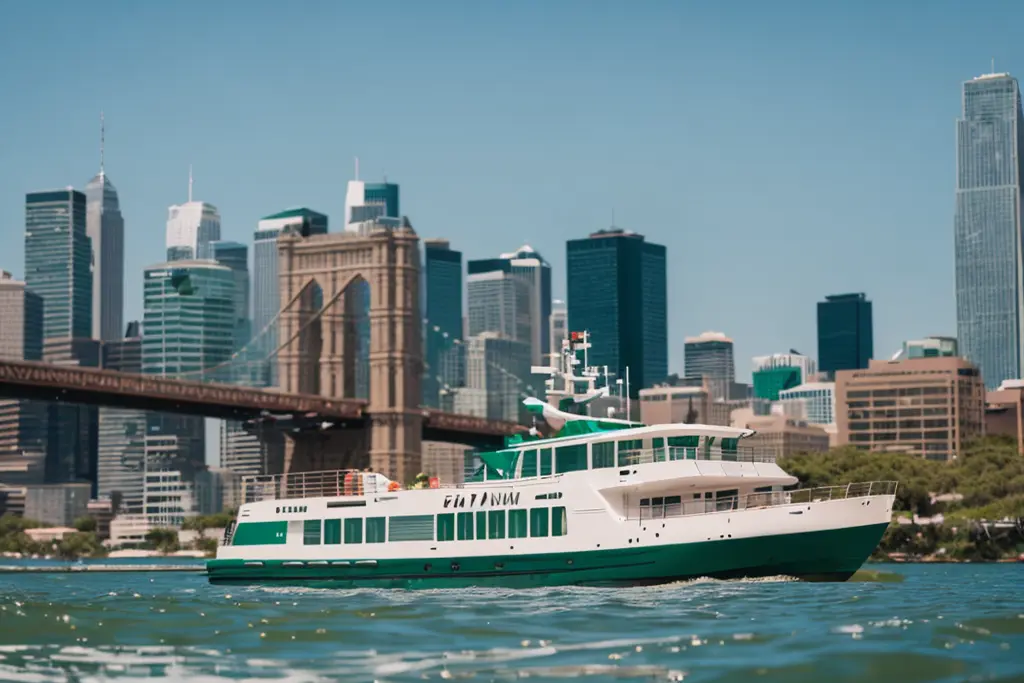
Fun fact:
Circle Line has been showing off NYC by boat for over 75 years — and you’ll circle the entire island of Manhattan in one trip.
Important Information:
- Parking: Paid parking nearby
- Accessibility: Boats are accessible; call ahead for boarding assistance
- Fee: $39–$50 adults; discounts for kids and seniors
- Hours: Daily cruises, times vary
- Best time to visit: Golden hour for magic light on the skyline
- Insider tip: Sit on the right side of the boat for Statue of Liberty views.
5. Delphinium Home
📍Location: 353 W 47th St, New York, NY 10036
If you’re the kind of traveler who skips the cheesy “I ❤️ NY” mugs and hunts for souvenirs with actual charm, Delphinium Home is your happy place. This cozy boutique has been around since the late ’90s, and it’s got major personality — think cheeky greeting cards, design-forward candles, and home goods with that perfect NYC attitude.
I’ve popped in here “just to browse” and somehow walked out with kitchen towels, an enamel pin, and a book about queer NYC history. It’s one of those shops that feels like a reflection of the neighborhood: colorful, creative, a little offbeat, and totally welcoming.
Fun fact:
This boutique is packed with quirky gifts, LGBTQ+ pride merch, and greeting cards with unapologetic sass.
Important Information:
- Parking: Street parking limited; use a nearby garage
- Accessibility: Step-free entrance
- Fee: Free to enter
- Hours: Daily, 11am–7pm
- Best time to visit: Late afternoon for quieter browsing
- Insider tip: Check out their “NYC attitude” home goods — perfect souvenirs without the Times Square tackiness.
6. Hudson River Park
📍Location: Extends from Battery Park to 59th St along the Hudson River Greenway
Fun fact:
This 550-acre park is Manhattan’s second-largest and was built on reclaimed piers.
Important Information:
- Parking: Paid garages along the West Side
- Accessibility: Fully accessible paths and restrooms
- Fee: Free
- Hours: 6am–1am daily
- Best time to visit: Sunset or early morning jogs
- Insider tip: Visit Pier 62 for the skatepark and carousel; it’s a hidden gem for families.
Hudson River Park is like NYC’s backyard — especially for locals who live on the West Side. This massive, 550-acre stretch of green hugs the Hudson River and offers a diverse range of amenities, including bike paths, playgrounds, skateparks, and quiet spots to watch the sunset.
What I love most is how the park reduces the city's noise without disconnecting you from it. You can rollerblade past skyline views, sip coffee on a bench while ferries glide by, or people-watch as joggers and dog-walkers cruise past.
In Hell’s Kitchen, the park’s entrance at Pier 84 is the perfect access point — close to the hustle, but far enough to feel like a break.
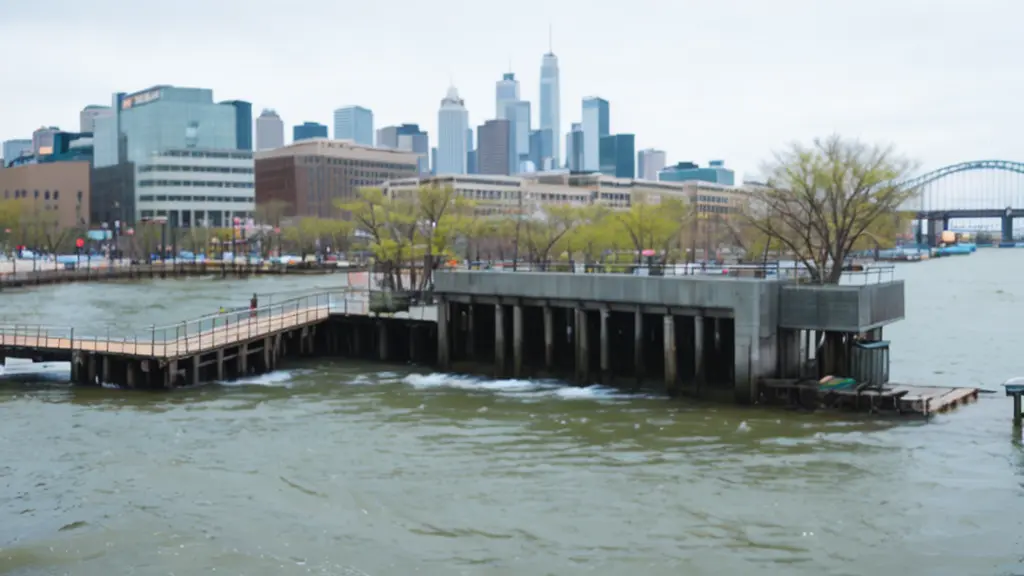
7. DeWitt Clinton Park
📍Location: 11th Ave & W 52nd St, New York, NY 10019
While Central Park gets all the glory, DeWitt Clinton Park is a quiet, historic green space that’s been serving Hell’s Kitchen for over 100 years. Back in the early 1900s, this was one of NYC’s first parks to have a public playground — a lifeline for working-class families living in cramped tenements nearby.
Today, it’s still very much a neighborhood park. You’ll see dogs racing around the large run, local kids on the swings, and older residents catching up on benches under shady trees. There’s also a community garden that bursts into life in spring and summer.
It’s not flashy — and that’s exactly why it’s great. This is the kind of park that reminds you New York isn’t just a tourist destination; it’s a city people call home.
Fun fact:
This was the first park in the city to have a public playground in the early 1900s.
Important Information:
- Parking: Limited; nearby paid garages
- Accessibility: Accessible walking paths and restrooms
- Fee: Free
- Hours: 6am–1am
- Best time to visit: Late morning or early evening
- Insider tip: The dog run here is huge — a favorite for local pet owners.
8. Sean Kelly Gallery
📍Location: 475 10th Ave, New York, NY 10018
Art lover or not, this gallery is worth stepping into. Sean Kelly Gallery is one of those spaces where contemporary art feels accessible without being watered down. Think immersive installations, thought-provoking photography, and the kind of work that sticks with you for days after.
I stopped by on a weekday and practically had the place to myself — just me, the art, and the occasional gallery assistant giving me space to take it all in. It’s housed in a sleek, minimalist space that makes everything feel intentional. The exhibits change often, so there’s always a reason to return.
Fun fact:
The gallery has hosted works by Marina Abramović and other avant-garde giants.
Important Information:
- Parking: Paid garage nearby
- Accessibility: Fully accessible
- Fee: Free
- Hours: Tue–Sat, 11am–6pm
- Best time to visit: Weekdays to enjoy the space solo
- Insider tip: Follow them on Instagram — they often post secret opening receptions.

9. The Landmark Tavern
📍Location: 626 11th Ave, New York, NY 10036
If walls could talk, Landmark Tavern would never shut up. Opened in 1868, this classic Irish pub has seen the West Side transform from shipping docks to skyscrapers — and it’s still pouring pints like it’s the 1800s. Inside, it feels like stepping back in time: exposed brick, candlelit tables, creaky floors, and a long bar that’s been here since Lincoln was president.
And yes, it’s haunted. The upstairs area is famously spooky, with more than one staff member claiming to have seen... things. Ghosts or not, the atmosphere is unbeatable — cozy, low-lit, and full of that old-school New York charm.
I love it best in the middle of the day, when you can actually sit and take it all in. Grab a Guinness, order the shepherd’s pie, and imagine the sailors and longshoremen who once did the same.
Fun fact:
This Irish pub opened in 1868 — and it still feels like a step back in time, especially with candlelit tables and ghost stories.
Important Information:
- Parking: Paid garage nearby
- Accessibility: Main floor accessible
- Fee: Menu items $10–$30
- Hours: Daily, 11:30am–midnight
- Best time to visit: Midweek lunch for fewer crowds
- Insider tip: Ask about the upstairs ghost sightings — even the staff have stories.
10. The Original Office of The New Yorker
📍Location: 25 W 43rd St, New York, NY 10036
You won’t spend hours here, but this unassuming building is a cool photo stop if you’re a literature or media buff. This was where The New Yorker magazine launched back in 1925 — upstairs in a cramped little office with big ideas. It was here that legends like Dorothy Parker, James Thurber, and E.B. White shaped a voice that still defines sharp, urban storytelling.
The building itself is private (you can’t go inside), but the facade still has some lovely Art Deco details. Combine it with a visit to nearby Bryant Park or the main NYPL branch for a low-key literary walk.
Fun fact:
The New Yorker magazine was founded here in 1925 — and its earliest cartoons were hand-drawn just upstairs.
Important Information:
- Parking: Paid garages nearby
- Accessibility: Public areas only; building is privately owned
- Fee: Free to view exterior
- Hours: Always visible
- Best time to visit: Pair with nearby library or Bryant Park
- Insider tip: Look up at the façade — there are Art Deco details that nod to literary history.
11. Javits Center
📍Location: 429 11th Ave, New York, NY 10001
You’ve probably heard of Javits Center in the context of Comic Con, auto shows, or giant trade expos — but here’s something most people miss: its green roof is one of the biggest in the country, with an urban farm and actual beehives producing jars of “Rooftop Honey.”
Even if you’re not attending an event, it’s worth swinging by to see the building’s dramatic glass design up close. It’s a modern architectural giant — and one of NYC’s more successful examples of sustainable design in action.
Inside, it’s pure spectacle. You’ll see people from all over the world gathered for everything from toy fairs to fashion expos. There’s even a solid food court on the second floor if you need a break while exploring the area.
Fun fact:
The massive rooftop of Javits Center is home to an urban farm and hundreds of thousands of honeybees.
Important Information:
- Parking: Paid garages only
- Accessibility: Fully ADA accessible
- Fee: Event-based; varies by convention
- Hours: Dependent on event
- Best time to visit: Major expos like Comic Con or Auto Show
- Insider tip: Visit the 2nd floor food court — it has skyline views and shorter lines than street vendors.
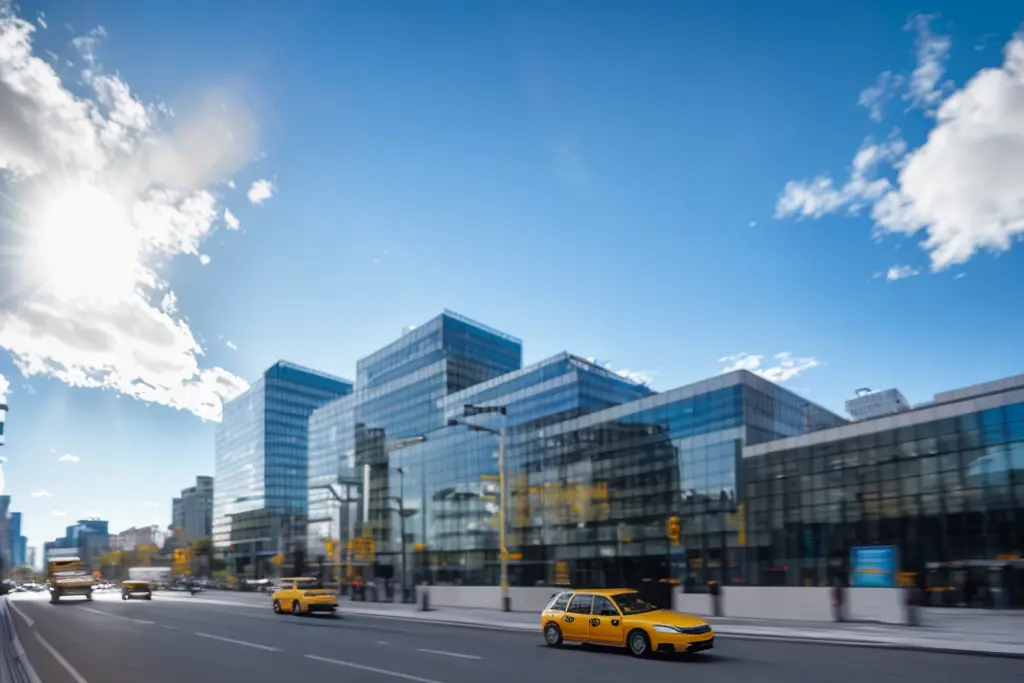
12. Restaurant Row
📍Location: W 46th St between 8th and 9th Aves, New York, NY 10036
This one-block stretch packs more culinary variety than some cities — and has the Broadway history to match. Restaurant Row has been feeding actors, stagehands, and theatergoers since the early 1900s, and the tradition continues strong today. You’ll find everything from family-style Italian to modern vegan, sushi, steakhouses, tapas, and classic French.
I always recommend it to friends seeing a Broadway show — come early for dinner, or swing by around 10 p.m. when the post-theater crowd rolls in and the street lights up with energy.
A few favorites:
Joe Allen – For Broadway trivia lovers (they hang posters of famous flops);
Le Rivage – Cozy French vibe, perfect date night spot;
Becco – All-you-can-eat pasta, classy but not stuffy.
Fun fact:
Nearly every cuisine is represented on this single street — from old-school Italian to modern vegan.
Important Information:
- Parking: Street parking is tight; garages nearby
- Accessibility: Most restaurants are accessible
- Fee: Varies by restaurant
- Hours: Lunch & dinner; late-night dining available
- Best time to visit: Post-theater crowd around 10pm
- Insider tip: Try Joe Allen’s — it's famous for serving Broadway flops and theater royalty alike.
13. Kahve
📍Location: 774 9th Ave, New York, NY 10019
You know those neighborhood cafés that feel like they’ve always been there — no gimmicks, just good coffee and a quiet corner to think? That’s Kahve.
Its name means “coffee” in Turkish, and while it’s tiny, the menu is surprisingly global. I usually go for the Turkish latte (sweet, spiced, and surprisingly smooth), but they also do a solid cold brew and pastries that actually taste homemade. This isn’t your Instagrammable latte-art spot — it’s where locals pop in before work, and freelancers come to knock out emails in peace.
Kahve is especially nice in the early morning, before the rush hits. The baristas are friendly, the lighting is soft, and you’ll likely overhear the kind of New York conversations that remind you the city’s soul lives in its little spots — not just its skyscrapers.
Fun fact:
Kahve means “coffee” in Turkish — and the café blends global flavors like cardamom and rose into your morning brew.
Important Information:
- Parking: Street parking limited
- Accessibility: Step-free entrance
- Fee: Coffee and snacks $3–$12
- Hours: Mon–Fri 7am–5pm, Sat–Sun 8am–6pm
- Best time to visit: Early morning for fresh pastries
- Insider tip: Try the Turkish latte — it’s sweet, spicy, and totally different from your usual cup.

14. Pottery NYC
📍Location: 669 10th Ave, New York, NY 10036
In a city that moves at full speed, Pottery NYC is the antidote. This local studio offers beginner-friendly wheel classes, workshops, and memberships for more serious ceramicists — but you don’t need experience (or talent) to enjoy it. Just a willingness to get your hands dirty.
I took one of their one-night intro classes and was honestly shocked at how calming it was. Clay has a way of forcing you to slow down, focus, and — cliché or not — be present. It’s weirdly therapeutic, even when your “bowl” ends up looking like a lopsided ashtray.
It’s also a great low-key date night or solo adventure if you’re traveling and want to do something that doesn’t involve screens or sidewalks. Plus, you get to keep what you make (after they fire it in the kiln).
Fun fact:
You can book a one-night wheel class even if you’ve never touched clay before.
Important Information:
- Parking: Paid garages nearby
- Accessibility: Check ahead — older buildings may not be fully accessible
- Fee: Classes from $75+
- Hours: Daily; class schedule varies
- Best time to visit: Weeknight evenings or weekend workshops
- Insider tip: Book 2–3 weeks in advance — classes fill up fast.
15. Bocca di Bacco
📍Location: 669 10th Ave, New York, NY 10036
If you’re craving Italian food that feels both rustic and refined — without the uptight vibe — Bocca di Bacco hits that sweet spot. This place walks the line between date-night elegant and “let’s split a bottle of wine and linger for two hours” casual. And yes, I’ve done both.
The menu leans classic: think handmade pastas, seafood risotto, veal Milanese. The wine list is deep but not intimidating, and the staff know their stuff. It’s the kind of spot where conversations run long, glasses are never empty for long, and dessert is always worth it (especially the panna cotta).
There are a few Bocca di Bacco locations in the neighborhood, but they all share that warm, candlelit atmosphere — cozy without trying too hard.
Fun fact:
You can book a one-night wheel class even if you’ve never touched clay before.
Important Information:
- Parking: Paid garages nearby
- Accessibility: Check ahead — older buildings may not be fully accessible
- Fee: Classes from $75+
- Hours: Daily; class schedule varies
- Best time to visit: Weeknight evenings or weekend workshops
- Insider tip: Book 2–3 weeks in advance — classes fill up fast.
16. Times Square
📍Location: Broadway & 7th Ave, New York, NY 10036
Okay, I know what you’re thinking — Times Square? Really? But hear me out.
Yes, it’s touristy. Yes, it’s chaotic. But it’s also one of the most iconic places on the planet — and if you catch it at the right time, it’s genuinely breathtaking. My favorite time to go? Between 11pm and 1am. The lights are still blazing, the energy is still wild, but the massive crowds are gone. You can actually see the place without being trampled.
Whether you’re watching the neon flicker off the glass towers or just soaking in the madness from the red steps, there’s something about standing there that reminds you you’re in the center of the universe — or at least, New York’s version of it.
Fun fact:
Times Square’s billboards are so bright, the area is visible from space.
Important Information:
- Parking: Avoid driving; take transit or walk
- Accessibility: Fully accessible
- Fee: Free
- Hours: Always open
- Best time to visit: 11pm–1am when crowds thin out but lights stay blazing
- Insider tip: Walk one block west to avoid the mascot/tourist trap chaos.
17. Broadway
📍Location: Various theaters along Broadway between 41st–53rd St
If you do one thing while you’re near Hell’s Kitchen, make it a Broadway show. Nothing — and I mean nothing — compares to the energy of live theater in this part of town. It’s not just entertainment; it’s a full-blown cultural experience, steeped in more than a century of stories, sweat, and standing ovations.
Even if musicals aren’t usually your thing, there’s something for everyone. Go for the classics like Chicago or Wicked, or take a chance on a newer, weirder play you’ve never heard of — those often end up being the most memorable. And if you’re on a budget? Apps like TodayTix or the TKTS booth in Times Square can get you serious discounts on same-day tickets.
Fun fact:
The longest-running Broadway show is The Phantom of the Opera, which ended its historic run in 2023 after 35 years.
Important Information:
- Parking: Paid garages; reserve ahead on show nights
- Accessibility: Most major theaters are fully ADA compliant
- Fee: $40–$250+ depending on show
- Hours: Evenings, with matinees Wed/Sat/Sun
- Best time to visit: Weekday matinees for cheaper tickets
- Insider tip: Download TodayTix or use the TKTS booth for day-of deals.
18. The Museum of Modern Art (MoMA)
📍Location: 11 W 53rd St, New York, NY 10019
MoMA isn’t technically in Hell’s Kitchen, but it’s close enough — and absolutely worth the short walk. It’s one of the most influential modern art museums in the world, and walking through it is like flipping through a greatest hits album of 20th and 21st-century creativity.
You’ll see the big names — Van Gogh’s Starry Night, Warhol’s soup cans, Picasso’s Les Demoiselles d’Avignon — but also bold, rotating exhibits that challenge what “art” even means. The building itself is sleek, calming, and perfectly curated, which makes it surprisingly easy to spend hours here without feeling overwhelmed.
Fun fact:
MoMA was the first museum to acquire a video game (Pac-Man, 2012) as part of its design collection.
Important Information:
- Parking: Nearby paid garages
- Accessibility: Fully ADA accessible
- Fee: $30 adults / free Fridays 4–8pm
- Hours: Daily, 10:30am–5:30pm
- Best time to visit: Weekday mornings
- Insider tip: Download the MoMA app — it’s like having a personal tour guide in your ear.
19. Hearst Tower
📍Location: 300 W 57th St, New York, NY 10019
Here’s a quick stop for design nerds and architecture fans: Hearst Tower. It’s one of NYC’s most beautiful modern skyscrapers — not because it’s flashy, but because of how seamlessly it blends history and innovation.
The base of the building dates back to 1928, built for publishing tycoon William Randolph Hearst. For decades, it stood alone, waiting for a tower that never came — until 2006, when architect Norman Foster finally topped it with a geometric glass-and-steel crown that’s now a model for sustainable high-rise design.
You can’t tour the offices, but the public lobby atrium is open and worth a peek. There’s a gorgeous cascading waterfall wall, natural light, and a quiet energy that makes you forget you’re just steps from Columbus Circle.
Fun fact:
It was NYC’s first green skyscraper — and the original 1928 building is still embedded in the base.
Important Information:
- Parking: Paid garages only
- Accessibility: Not open to public tours
- Fee: Exterior viewing only
- Hours: Office building hours
- Best time to visit: Early morning for crisp photos
- Insider tip: Check out the public atrium inside the lobby — the waterfall wall is stunning.
20. Berry Blonde Spa
📍Location: 239 W 14th St, New York, NY 10011
Hidden in plain sight, this boutique spa is one of those places locals whisper about in group chats but don’t blast all over social media — and that’s part of the charm. Berry Blonde Spa is known for organic facials, customized skincare, and what some call the best wax in NYC (no joke — people rave about it).
It’s a far cry from the flashy Midtown salons with neon signs. The vibe here is calm, clean, and unpretentious. Think minimalist interiors, essential oils in the air, and estheticians who actually listen to your skin concerns. If you’ve spent days walking the city and need a little reset, this place is a great way to come back to life.
Fun fact:
Known for custom facials and NYC’s best organic waxing — this is a local wellness secret.
Important Information:
- Parking: Paid parking nearby
- Accessibility: Call ahead to confirm ADA access
- Fee: Services from $25–$150
- Hours: Daily, 10am–8pm
- Best time to visit: Midweek mornings
- Insider tip: Book their seasonal facials — they change ingredients based on the weather.
21. Museum of Ice Cream
📍Location: 558 Broadway, New York, NY 10012
Alright, technically this isn’t in the neighborhood — it’s down in SoHo — but if you’re traveling with kids, or just want to tap into your inner five-year-old, the Museum of Ice Cream is a sugar-coated, pastel-colored blast. And yes, there’s a giant pool filled with plastic sprinkles. And yes, you’re allowed (encouraged, even) to jump in.
The museum is more experience than exhibition — think multi-sensory rooms, interactive photo ops, and ice cream tastings that range from classic vanilla to flavors like churro and lychee. Is it touristy? Absolutely. But it’s also weirdly joyful. If you lean in, it can be just the right kind of cheesy fun that balances out a moody art gallery or a gritty city stroll.
Fun fact:
The sprinkle pool contains over 100 million antimicrobial plastic sprinkles (yes, really).
Important Information:
- Parking: Street parking rare; take subway
- Accessibility: Fully accessible
- Fee: $39 adults / $31 kids
- Hours: Daily, 10am–7:30pm
- Best time to visit: Morning slots for the best photos
- Insider tip: You get unlimited ice cream — pace yourself!
Interactive Map
Where to Eat in Hell's Kitchen
| Restaurant | Contact Info | Opening Hours | Nearest Landmark / Attraction | Main Meals / Signature Dishes |
|---|---|---|---|---|
| Kochi | 652 10th Ave, New York, NY 10036 Phone: (646) 478-7308 |
Mon–Thu & Sun: 5:00 pm–9:30 pm Fri & Sat: 5:00 pm–10:00 pm |
Near DeWitt Clinton Park / Hudson River waterfront | Michelin-starred Korean tasting menu (8–9 courses; skewers, hwe, bibimbap) |
| Palermo Argentinian Bistro | 373 W 46th St, New York, NY 10036 Phone: (212) 265-2060 |
Mon–Thu & Sun: 5:00 pm–11:00 pm Fri & Sat: 5:00 pm–12:00 am |
Restaurant Row / near Broadway theaters | Argentinian steaks, steak frites, cocktail bar |
| Kashkaval Garden | 852 9th Ave, New York, NY 10019 Phone: (212) 245-1758 |
Sun–Wed: 12:00 pm–11:00 pm Thu–Sat: 11:00 am–11:00 pm |
Hell’s Kitchen neighborhood — Mediterranean-style small plates scene | Turkish flatbreads, skewers, fondue-style small plates |
| Kohoku-Ku Ramen | 709 9th Ave, New York, NY 10019 (Phone not listed publicly) |
Sun–Thu: 11:00 am–10:00 pm Fri–Sat: 11:00 am–11:00 pm |
Hell’s Kitchen strip — casual vibrant ramen spot | Rich and thick ramen broths (spicy tonkotsu, miso), yakitori skewers |
| Empanada Mama | 765 9th Ave, New York, NY 10010 (10019) Phone: (212) 698-9008 |
Open 24 hours, every day | Central Hell’s Kitchen — quick Latin-American eats | Over 40 flavors of empanadas, Latin-American street-food |
| Route 66 Bar & Grill | 858 9th Ave (between 55th & 56th), New York, NY 10019 Phone: (212) 977-7600 |
Daily: 7:00 am – 12:30 am | Near Lincoln Center & Theater District | Breakfast through late-night: chicken & waffles, omelets, Reuben |
| Friedman’s Restaurant | 450 10th Ave, New York, NY 10018 Phone: (212) 268-1100 |
Mon–Fri: 8:00 am–9:00 pm Sat–Sun: 9:00 am–9:00 pm Happy Hour daily from 3:00 pm |
Midtown West in Hell’s Kitchen — casual American diner | All-day breakfast, casual American fare, happy hour menu |
| Le Soleil | 858 10th Ave (between W 56th & W 57th), New York, NY 10019 (Phone not publicly listed) |
(Hours not listed; traditionally daily lunch/dinner service) | Near Lincoln Center / last Haitian restaurant in the area | Traditional Haitian dishes (lambi, fricasseed conch), colorful décor |
Hell's Kitchen Vs Times Square
| Feature | Hell’s Kitchen | Times Square |
|---|---|---|
| Location & Boundaries |
West Midtown Manhattan, from W 34th/41st to W 59th Streets; bounded by Eighth Avenue (east) and Hudson River (west). |
At the junction of Broadway and Seventh Avenue, between W 42nd and W 47th Streets in Midtown Manhattan. |
| Vibe & Atmosphere |
Unpretentious, residential, with a steady buzz of local life. Known for small multicultural eateries, LGBTQ+ scene, and creative community. |
Electric, tourist-heavy, dazzling with giant digital billboards. Known as the “Crossroads of the World.” |
| Cultural & Entertainment Highlights |
Actors Studio, Off-Broadway theaters, Intrepid Museum, Hudson River Park, the High Line entrance, new green spaces like Pier 97. |
Broadway theaters, One Times Square, Duffy Square, TKTS booth, and the world-famous New Year’s Eve ball drop. |
| Dining & Nightlife |
Eclectic and affordable international cuisine along 9th Ave and Restaurant Row. Strong LGBTQ+ nightlife and vibrant local bars. |
Tourist-oriented chain restaurants, themed dining, and eateries catering to theater-goers. |
| Pedestrian & Safety Environment |
More neighborhood-scaled and calmer streets. Revitalized waterfront offers tranquility and community-focused safety. |
Extremely high foot traffic (hundreds of thousands daily). Heavy police and security presence ensures overall safety. |
| Historical Evolution |
Once a gritty, working-class Irish neighborhood. Gentrified from the 1980s onward, now a diverse creative enclave with low-rise character preserved by zoning. |
Formerly Longacre Square, renamed in 1904 after The New York Times moved there. Evolved into a global icon of advertising, nightlife, and mass tourism. |
Hell's Kitchen Major Events
| Date | Event | Location |
|---|---|---|
| August 20–31, 2025 | “Hell’s Kitchen” Broadway Musical performances | Shubert Theatre, 225 West 44th Street |
| July 26, 2025 | Hell’s Kitchen Spectacular street fair | 8th Avenue, Hell’s Kitchen (approx. between W 40th–W 48th) |
| Summer (TBD), 2026 | Ninth Avenue International Food Festival | Ninth Avenue between W 42nd–W 57th Streets |
| May–October 2025 (recurring) | Open Streets closures (Hudson Boulevard West) | Hudson Boulevard West at W 35th–W 36th Streets |
How to Get to Hell's Kitchen
From Jersey City, NJ
- By PATH Train: Take the PATH from Journal Square or Grove Street to 33rd Street. Then transfer to the A, C, or E subway lines uptown to 42nd Street–Port Authority, which drops you right at Hell’s Kitchen.
- By Bus: NJ Transit buses run from Journal Square and Exchange Place to Port Authority Bus Terminal (42nd St & 8th Ave), directly in Hell’s Kitchen.
- By Car: Cross via the Lincoln Tunnel (connects NJ to 39th Street in Hell’s Kitchen).
From Hoboken, NJ
- By PATH Train: PATH from Hoboken Terminal to 33rd Street, then a quick subway transfer (A/C/E) one stop to Port Authority.
- By Ferry: NY Waterway ferry from Hoboken Terminal to Midtown/West 39th Street Ferry Terminal — walking distance to Hell’s Kitchen.
- By Car: 10–15 minutes via the Holland Tunnel or the Lincoln Tunnel, depending on traffic.
From Newark, NJ
- By Train: NJ Transit or Amtrak from Newark Penn Station to New York Penn Station (34th Street). From there, walk 10–15 minutes west/north into Hell’s Kitchen.
- By Bus: NJ Transit buses go to the Port Authority Bus Terminal.
- By Car: 25–35 minutes via I-95 North and the Lincoln Tunnel.
From Brooklyn, NY
- By Subway: Take the C or E train directly to 42nd Street–Port Authority. From Williamsburg/Greenpoint, transfer from the L line at 8th Ave or the G to Court Square.
- By Car: Cross via the Brooklyn Battery Tunnel or Brooklyn Bridge, then head north/west through Midtown to 8th–11th Avenues.
From Queens, NY
- By Subway: From Long Island City, Astoria, or Jackson Heights, take the E or 7 train. The E train goes straight to Port Authority Bus Terminal, inside Hell’s Kitchen.
- By Car: Cross into Manhattan via the Queens Midtown Tunnel or 59th Street Bridge, then head west.
From The Bronx, NY
- By Subway: Take the D train from the Bronx to 42nd Street–Bryant Park and walk west, or the 1/2/3 to Times Square–42nd Street and cross to 8th–10th Avenues.
- By Car: Cross via the Major Deegan Expressway (I-87) to the Henry Hudson Parkway, exit near 42nd–57th Streets.
Conclusion
Hell’s Kitchen doesn’t care if it’s on your “Top 10 NYC Must-Sees” list — and that’s kind of the point. It doesn’t try to impress like SoHo or reinvent itself like the Lower East Side. It just is. And in a city that’s constantly shape-shifting, that’s refreshing.
You’ll find layers here. You might start your morning with a perfectly made Turkish latte, wander the decks of a historic aircraft carrier by lunch, browse a queer-owned gift shop in the afternoon, then cap the night with pasta and wine a few feet from where Broadway legends eat post-show.
It’s loud. It’s messy. It’s real. And if you let it, Hell’s Kitchen will show you a version of New York that tourists rarely see — one that feels a little less curated and a lot more lived in.
FAQ
1. How far is Hell's Kitchen from Times Square?
Hell’s Kitchen is located just west of Times Square. It’s a quick walk, typically around 5-10 minutes depending on where you are in Hell's Kitchen. This proximity makes it easy to explore both neighborhoods in a single day.
2. What is Hell's Kitchen known for?
Hell’s Kitchen is famous for its rich history, diverse food scene, and artsy vibe. The area is also known for Restaurant Row, home to some of New York City’s best dining spots, as well as its proximity to Broadway theaters. In recent years, it’s become a hub for both locals and visitors looking for great food, outdoor activities, and cultural experiences.
3. Is Hell's Kitchen worth visiting?
Absolutely! Whether you're a foodie, a history buff, or just someone looking to explore a lively neighborhood, Hell's Kitchen has plenty to offer. From cultural hotspots like the Irish Arts Center and Sean Kelly Gallery to outdoor escapes like Hudson River Park, there's something for everyone in Hell's Kitchen. Plus, it's close to iconic landmarks like Times Square and Broadway.
4. What’s the best time to visit Hell’s Kitchen, NYC?
Hell’s Kitchen is great to visit year-round, but the best time would be spring or fall when the weather is mild and perfect for exploring. During these seasons, you can enjoy outdoor activities like walking along the Hudson River Park or dining al fresco at one of the many restaurants on Restaurant Row. Summer can be lively with outdoor festivals, while winter offers a cozy vibe with indoor attractions like museums and theaters.
5. Are there family-friendly activities in Hell's Kitchen?
Yes! Hell's Kitchen offers several family-friendly activities, including a visit to the Intrepid Sea, Air & Space Museum, kayaking at Manhattan Kayak Co., and the playful Museum of Ice Cream. For outdoor fun, you can take the kids to DeWitt Clinton Park, which has playgrounds and plenty of open space for running around.


